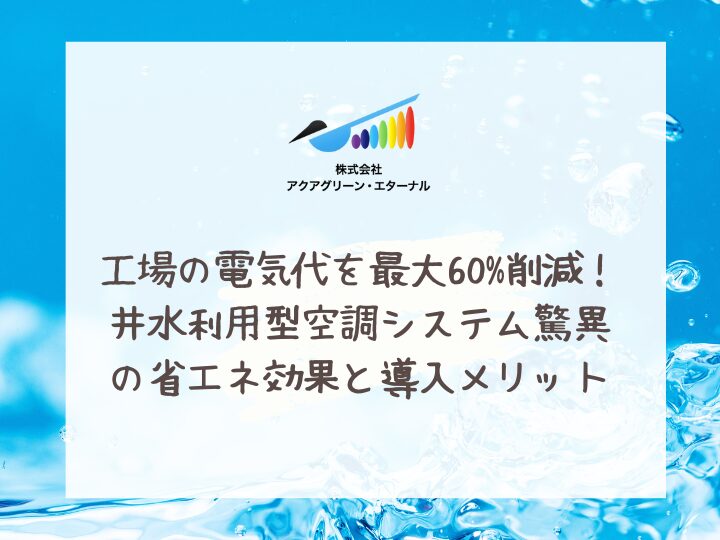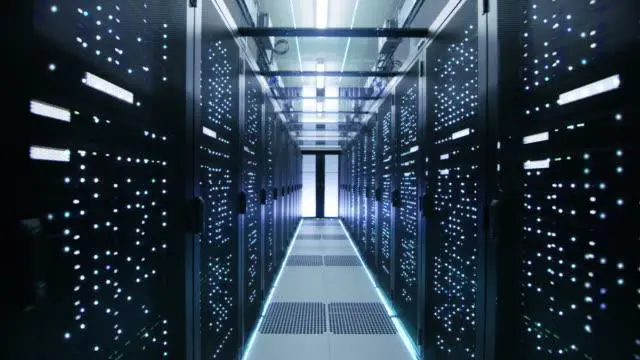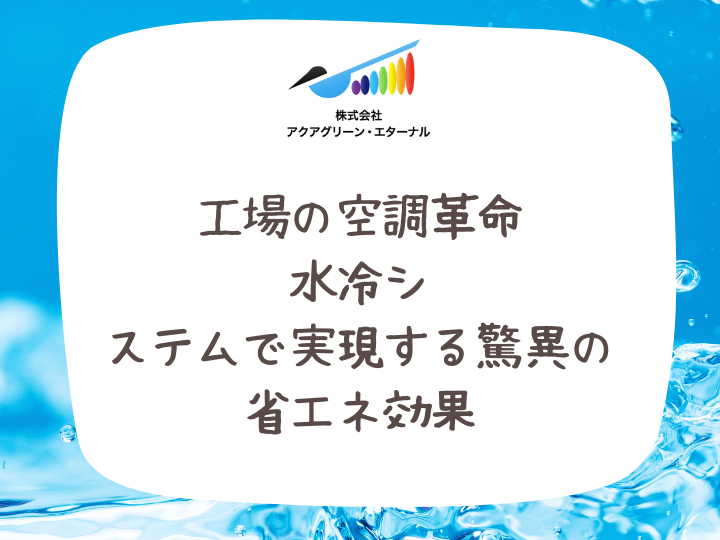Reduce your factory's electricity bill by up to 60%! The amazing energy-saving effects and benefits of installing a well water air conditioning system
Well water air conditioning systems are a technology that utilizes the stable temperature of groundwater to achieve highly efficient heating and cooling. Compared to conventional systems, the COP is two to three times higher, and power consumption can be significantly reduced. Although the initial investment is high, it can be recovered in about five to eight years, and large economic benefits can be expected in the long term. With a low environmental impact, it is attracting attention as a sustainable air conditioning solution.

Overview and advantages of well water air conditioning systems
The well water air conditioning system is an innovative air conditioning technology that utilizes the thermal energy of groundwater. This system is designed based on the principles of thermodynamics and is highly efficient in factories and large commercial facilities. The temperature of groundwater is stable at approximately 10 to 15 degrees Celsius throughout the year, and by using this as a heat source, efficient heating and cooling can be achieved with minimal impact from the outside temperature.
Specifically, in the summer, the cold energy of groundwater is used to cool the room, and in the winter, the heat of the relatively warm groundwater is used to heat the room. This process applies the principle of the Carnot cycle, and can operate at close to the theoretical maximum efficiency. Furthermore, by combining it with heat pump technology, further efficiency improvements can be expected.
It has been proven that the COP (coefficient of performance) is two to three times higher than that of conventional air-cooled systems, which directly translates into a significant reduction in power consumption. Furthermore, it is an excellent system from the perspective of environmental protection, as it minimizes the use of refrigerants that have a high environmental impact, such as fluorocarbon gases.
Breakdown of major costs for initial investment
The introduction of a well water air conditioning system does require a considerable initial investment. However, this investment is a strategic decision to achieve both long-term economic efficiency and reduced environmental impact. If we were to design the entire medium-sized factory, the major cost items would be as follows:
1. Well drilling cost: The optimal depth design based on geological survey is required, and a well of 100 to 200 m is usually required. The cost depends largely on the geological conditions, and is about 5 million to 20 million yen.
2. Pump equipment cost: A submersible pump that is both durable and efficient is required, which will cost around 2 to 5 million yen. By introducing an inverter control system, further energy savings can be expected.
3. Heat exchanger equipment cost: Select the most suitable heat exchanger for your application, such as a plate type or shell and tube type. The most common materials are titanium or stainless steel, and the cost is around 3 to 8 million yen.
4. Piping construction costs: Piping design must take into account corrosion resistance and insulation, and depending on the scale, this will cost around 10 to 30 million yen.
5. Air conditioning equipment costs: High-efficiency heat pump units and air conditioners are required, which will cost around 20 to 50 million yen.
These costs vary greatly depending on the size of the facility and the required heating and cooling capacity. Also, depending on the optimal design of the entire system, it may be possible to downsize individual devices and reduce the total cost.
Running costs and energy saving effects
The outstanding feature of well water air conditioning systems is their low running costs. We will explain the theoretical justification and provide specific figures.
First, the COP of this system typically reaches about 5 to 7. This means that you can get 5 to 7 kW of cooling or heating capacity per 1 kW of input power. On the other hand, the COP of a conventional air-cooled system is usually about 2 to 3. Even with simple calculations, we can see that power consumption can be reduced by 50 to 701 TP3T.
Analysis of actual operation data has confirmed a power reduction effect of 40 to 601 TP3T throughout the year. What is particularly noteworthy is that stable efficiency can be maintained even when the outside temperature is extremely high in the summer or low in the winter. This is because the temperature of the groundwater, which is the heat source, remains almost constant throughout the year.
Furthermore, it is also excellent from the perspective of demand response. By increasing the operation of well water utilization systems during peak electricity demand periods, it contributes to the stabilization of the entire power grid and enables significant reductions in electricity bills through peak shaving.
From the perspective of water resources, the use of a "return system" in which groundwater is returned underground after heat exchange prevents a drop in the groundwater level and enables sustainable operation.
Initial investment payback period
To accurately assess the economics of a well water cooling system, a life cycle cost analysis is essential. The payback period for the initial investment is calculated through a comprehensive analysis that takes into account the following factors:
1. Annual energy consumption: Precisely simulate the amount of power reduction compared to conventional systems
2. Electricity unit price: Considering fluctuations due to region and contract type
3. Equipment lifespan: Usually 15 to 20 years
4. Maintenance costs: Includes the costs of regular inspections and part replacement.
5. Carbon taxes and environmental regulations: Consider the possibility of introducing them in the future
Taking these factors into consideration, when analyzing using the Net Present Value (NPV) method or the Internal Rate of Return (IRR) method, the payback period is usually about 5 to 8 years. However, in factories that operate 24 hours a day or in areas with high demand for heating and cooling, there are many cases where the payback period is shortened to about 3 to 5 years.
In addition, by taking advantage of subsidy programs offered by the national and local governments, it may be possible to compensate for the initial investment of around 20 to 301 TP3T, which may further shorten the payback period.
From a long-term perspective, it is often possible to realize economic benefits of two to three times the initial investment over the equipment's useful life of 15 to 20 years, making it an extremely attractive investment from a financial perspective.
Precautions and issues to be aware of when implementing
When installing a well water air conditioning system, particular attention must be paid to the following points from the technical, legal and environmental points of view:
1. Water quality management: Groundwater quality varies greatly from region to region. In particular, high mineral content such as iron, calcium, and magnesium can cause scaling and corrosion of pipes, pumps, and heat exchangers. To address this issue, the introduction of water treatment systems such as ion exchange resins and electrolysis devices is effective. Regular water quality monitoring and preventive maintenance based on the results are also essential.
2. Compliance with legal regulations: Regulations regarding water rights and groundwater extraction vary by region. In particular, in areas where there are concerns about land subsidence or salinity, strict regulations may be in place. Detailed prior discussions with relevant authorities are required, and in some cases, an Environmental Impact Assessment (EIA) may be required.
3. Subsidence risk management: Excessive pumping of groundwater can cause subsidence. To prevent this, proper water volume management and the installation of reinjection wells are important. Specifically, the balance between the amount of pumped water and the amount of reinjection must be constantly monitored, and land movements in the surrounding area must also be regularly measured.
4. Comprehensive maintenance plan: It is important to set appropriate maintenance cycles for each component, such as pumps, heat exchangers, and piping. In particular, regular chemical cleaning to remove scale and prevent corrosion, replacement of pump bearings, and inspection of heat exchanger plates are required. These maintenance costs must be properly estimated at an early stage and incorporated into the running costs.
5. Designing a backup system: It is essential to design an appropriate backup system in case of groundwater depletion or equipment failure. For example, a hybrid configuration with an air-cooled system or the use of multiple wells may be considered. In addition, from the perspective of BCP (Business Continuity Plan), an emergency operation plan should be formulated in advance.
6. Monitoring and optimization: Continuous monitoring and analysis of operational data is important to maximize system efficiency. The introduction of an optimized control system using IoT sensors and AI technology can be expected to further reduce energy consumption and operational costs.
With careful planning and appropriate measures in place to address these issues, a well water air conditioning system can be an extremely effective solution that can greatly contribute to energy conservation and reduced environmental impact in factories. Although the initial investment is certainly high, when you consider the long-term economic benefits and reduced environmental impact, in many cases it can be an extremely rational investment decision.


